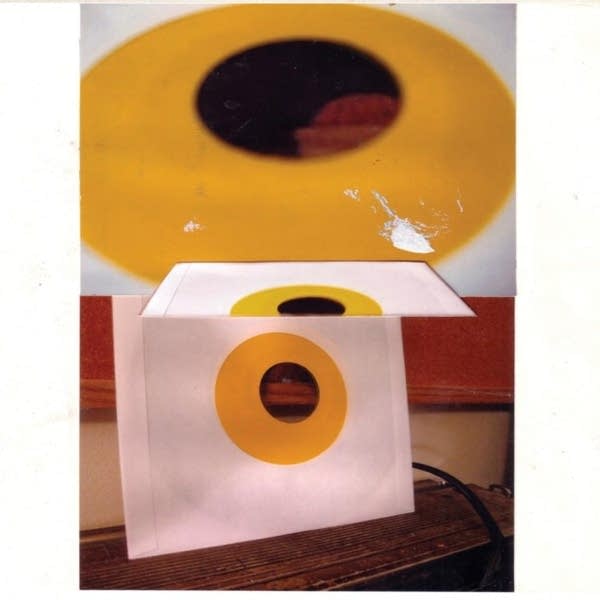Album Review: Guided By Voices - Let's Go Eat The Factory
by Mac Wilson
January 01, 2012

Your neighbor down the street walks up to you and starts telling you about his really great band, man. You should really check out our show this weekend - there's free beer and everything. You think, yeah right, these drunken fools have no idea what they're doing. But sure, I suppose I can come see your band this weekend, just so your feelings don't get hurt. You show up to the show, your (totally sloshed) neighbor steps behind the mic, and from the first note, your jaw hits the ground, as you suddenly realize that the idiots down the street are actually one of the best rock bands in the world. This rock legend plays out as the dramatic climax of the film High Fidelity, and it also continues to play out in real life in the form of Guided by Voices: a band of everymen who gradually became one of the most beloved acts in alternative rock before apparently disbanding in 2004, only to reunite in recent years for a series of shows and tours, and now, a new studio album, Let's Go Eat the Factory.
The new album reunites the band's "classic lineup" from the mid-1990s, but the fulcrum of the band continues to be Robert Pollard, one of the most prolific and idiosyncratic musicians in modern music. The ex-schoolteacher Pollard has kept busy during GbV's hiatus by recording a staggering volume of solo records under various monikers, branching across the spectrum of rock n' roll in both sound and lyricis. From the get-go, it's tempting to envision Let's Go Eat the Factory being filled with similarly varying, indistinct bashers that Pollard could have whipped up in his sleep (and to be honest, he probably does: he's spoken about his tendency to work random phrases of everyday conversation and dream speech and turn them into entire songs.) But one of the most pleasant surprises about Let's Go Eat the Factory is its reluctance to adhere to traditional songcraft or sonics, instead devolving into disjointed fragments and seemingly half-baked ideas, often recorded through the cheapest boombox at Radio Shack. The kicker, of course, is that the previous sentence also describes the sound of what are considered the band's "classic" albums: 1994's Bee Thousand and 1995's Alien Lanes. Each of those albums is less about individual hit songs than they are about maintaining a flow and building their own world, which is also what the band accomplishes on Let's Go Eat the Factory. The album can sound willfully bizarre and even frustrating, but it's ever intriguing to hear a band carve out its own trademark sonic direction.
This doesn't mean that the album is lacking in hit singles - they're just hit singles viewed through Guided by Voices' own prism. (If you need an example of this, go to YouTube and check out the album version of 1995's "My Valuable Hunting Knife;" it sounds quintessentially GbV, both brilliantly catchy and sounding like it was recorded for $5. Then go check out the Tigerbomb EP version, which was recorded with actual studio equipment and sounds like a potential Top 5 hit. I feel that one of the critical observations of the essence of Guided by Voices is the distinction between the versions: what is the "real" GbV? The Tigerbomb version is awesome radio rock, yet if you sit down and listen to the original version, it becomes its own modern rock hit when you close your eyes and let your imagination fill in the gaps. If Springsteen had released a full-band version of Nebraska six months later (as was his original plan), it would have found its own audience, yet only amplified the strengths of his original, stripped-down recordings. It calls to mind another classic archetype of popular music: are the songs banged out in ten minutes truer to the spirit of rock n' roll than those labored over for months in the studio? Anyway, I inadvertently wound up putting one of my core theses within brackets, so thanks for reading.) Guided by Voices require the listener to step through the looking glass into their own universe, and once you're there, hit singles can sprout up from nowhere. Speaking of which, the perpetually underrated Tobin Sprout actually contributes several of the album's strongest numbers, including "Spiderfighter" and "Waves," which rides on a persistent, buzzing riff, and is one of the most "professional-sounding" songs on the record. Many songs paint vivid portraits and disappear in a matter of seconds; "Doughnut for a Snowman," "How I Met My Mother," and "Chocolate Boy" all flame out in under two minutes. Pollard's Beatles fascination also persists in "Hang Mr. Kite" and "I Invented the Sun." One of the songs we've played on The Current, "The Unsinkable Fats Domino," adheres to a traditional verse-chorus-bridge-chorus structure, and actually sounds like a real song (!), and even THAT clocks in at just 1:53. The record loses a little steam towards the end, before wrapping up with the crowd-pleasing encore "We Won't Apologize for the Human Race."
If their past history is any indication, this should be the first of several new releases for Guided by Voices, which will inevitably find the band shaking off any rust and perhaps even turning up the 'rock' knob a little more. For now, Let's Go Eat the Factory is an uncompromising record that takes no shortcuts, instead opting to play upon their own unique traits. As Pollard yells in a song that's practically all chorus, "We are living proof that God loves us!" What other rational explanation is there for how a bar band from Dayton, Ohio earned their proper recognition as one of the best rock bands in the world?
